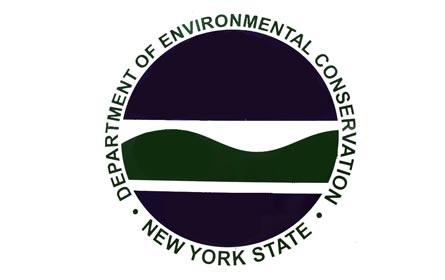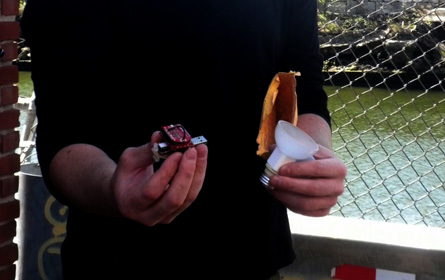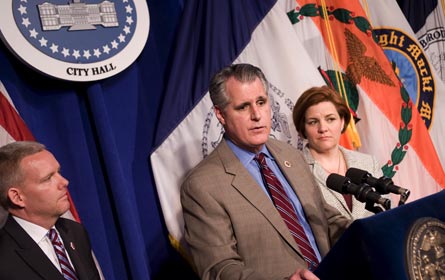Federal Reports Warn of Staff Shortages at DEC

Staffing and resource shortages at the Department of Environmental Conservation’s (DEC) Shellfisheries division have been flagged as an “emerging problem” by the U.S. Food and Drug Administration. FDA program evaluation reports released in late 2011 cite staffing-related issues in three of the Shellfisheries division’s four units. A January 2012 letter to DEC Commissioner Joseph Martens, which accompanied the FDA’s bi-annual evaluation of the division, notes that one of the units, “May be currently stretched to its operating limits. FDA encourages the DEC to invest the necessary resources to keep the Growing Area Classification Program in compliance (…) the FDA is concerned with the loss of staff in the Growing Area Classification Unit which is critical to protecting public health.”
In an interview last month with Gotham Gazette, Commissioner Martens stated that the DEC will not see an increase in staff “anytime soon” due to the state’s fiscal situation. The DEC has lost almost 800 employees since 2008. Agency staffing levels are at their lowest point in over twenty years.
Monitoring Shellfish Safety
The DEC’s Shellfisheries division monitors water quality in state shellfish growing areas, and regulates the harvest, handling and processing of shellfish. The division is part of the DEC’s Bureau of Marine Resources (BMR), and is responsible for both maintaining the state’s shellfish resources and protecting public health. Shellfish are an important part of New York’s multi-million dollar seafood industry. Clams, mussels, scallops and oysters comprise over half of the state’s commercial catch, according to the New York Seafood Council, a non-profit industry association. Because shellfish pump and filter water through their bodies, they can absorb pollutants, bacteria and other contaminants, which can lead to illness when the fish are consumed. DEC’s Shellfisheries division works in conjunction with federal agencies such as the Environmental Protection Agency and the Food and Drug Administration to maintain national sanitation standards within the New York shellfish industry. Local municipalities are also responsible for monitoring shellfish-related activity, but the DEC is responsible for establishing and maintaining baseline regulations.
A DEC staff person speaking on condition of anonymity pointed out that of any division at the DEC, Shellfisheries has the most acute link to public health. “What we do is directly public health related every day. It's just part of what we do…Contaminated or spoiled shellfish could get out and people could get sick.” Earlier this month, the Shellfisheries division closed portions of Shinnecock Bay and Mattituck Creek in Suffolk County due to the appearance of biotoxins, which are naturally occurring but are potent neurotoxins when ingested. Monitoring and preventing biotoxin contamination is a relatively new challenge for the DEC. The State first closed shellfish areas due to the identification of biotoxins in 2006, and the plankton blooms have appeared along the Northeastern seaboard. The presence of biotoxins in New York shellfish growing areas occurred a month earlier than anticipated this year. Says the DEC staffer, “this problem has expanded. We have no more people to do the work. It is pushing us to the limit.”
The FDA Weighs In
The FDA praised the Shellfisheries division’s “pro-active” development of a biotoxin monitoring system in its 2011 review. It also determined that the division’s growing area classification unit, which monitors sources of water pollution in about a million acres of marine and ocean territory, was not in full compliance with federal regulations. Monitoring water pollution is especially critical in New York because the Long Island coastline is densely populated. National Shellfish Sanitation guidelines require that DEC biologists conduct a series of shoreline surveys targeting sources of pollution, such as water treatment plants, that can impact shellfish areas.
The shoreline surveys are re-done every 12 years on a rotating basis as pollution sources change. The surveys are then used to set up water sampling stations, which enable the Shellfisheries division to accurately classify the safety of growing areas. Water sampling is conducted year round.
The FDA flagged an open growing area which had not been surveyed since 1994, along with sampling data that needed completion. Growing areas whose surveys are not up-to-date are eventually closed until current information is obtained. These closings impact the local shellfish industry. The survey report and sampling were subsequently completed and the growing area classification unit is back in compliance.
But the FDA discussed the resource strain caused by increased biotoxin monitoring and the re-opening of "conditional" harvesting areas closed because of earlier budget cuts. According to the FDA, the growing classification unit “is already highly dependent on borrowing staff and resources from other programs to accomplish minimally required field activities.” The unit will be reviewed again this year. In a written response to questions about the FDA review, Emily DeSantis, DEC’s Director of Public Information, stated, “we provided the USDA with an action plan to address the non-conformities in the Growing Area Program. We have implemented that plan.”
Staffing and Funding Issues
The 2011 FDA review also found staffing related issues in the DEC’s Shellfisheries plant inspection and lab units. The Shellfisheries division has a dedicated unit which inspects wholesale plants and shipping facilities where oysters, clams, etc. are unloaded and processed for distribution. The unit is an important part of the safety process because they are looking for potential cases of spoilage and poisoning before product heads to restaurants and stores. The FDA recommended to DEC in 2011 that the agency fill two vacant inspector positions, stating “that at current staffing levels, it will be nearly impossible for DEC to achieve the minimum number of plant inspections required under the NSSP ordinance in the future.” Emily DeSantis responded that the agency has filled one of the plant inspection unit’s two vacant positions, and that “we feel that we are adequately staffed at this time.”
The FDA review also discusses instances when the Shellfish Sanitation Program was constrained by lack of funding for additional testing, equipment, and staff time. According to the FDA, during the biotoxin closures in spring 2010, DEC staff sent samples out of state for analysis as they tried to secure funding for a specialized form of testing that could be performed locally. The Division’s Vp monitoring program, which tests for strains of a particular pathogen found in Oyster Bay in 1998, has been suspended since 2009 due to lack of funding. According to the FDA, Vp-related illnesses spiked in 2009 and sporadic cases occurred in 2010. “Several (cases) may have had associations to shellfish harvested in New York waters.” The FDA discussed the Shellfisheries division’s inability to purchase gene-probe materials, and questioned whether “such monitoring may have prevented Vp-contaminated shellfish from being sold and consumed if DEC-BMR had the necessary screening materials sooner.”
Cutbacks
DEC has administered other cost cutting measures impacting the Shellfisheries division, such as restricting overtime, which the FDA argues has “Significantly reduced the time frame for accomplishing water sampling…and has resulted in 30% loss of sampling opportunities.” Samples previously gathered over a 5 day period must now be gathered in 3 or 4 days. The necessity for water sampling activity has increased as the division responds to the evolving biotoxin situation each spring. According to the FDA, the compression of sampling activity due to funding restrictions has “overwhelmed” DEC’s shellfisheries lab because samples must be processed rapidly. The FDA has also proposed that the lab may need another technician.
The FDA’s most recent reports raise a number of questions about how far resources can be stretched before core functions that protect public health and natural resources become untenable. The FDA did not comment on this story. The DEC has argued that some of the impact of recent staffing losses throughout the agency can be mitigated by efficiency and technology improvements. An anonymous source within the Shellfisheries division observes, “(we are) constantly in catch-up mode. It’s grinding people down. You don’t do more with less. You can only do less with less.” In reference to the division’s work to track biotoxins and man-made pollution sources in the state’s shellfish growing areas, he adds, “We are just marginally keeping our heads above water. At some point we will fall too far behind.”
Where Tech and Environment Meet

Lief Percifield wants to let New Yorkers know about possible sewage seeping into their drinking water.
Every year 27 billion gallons of untreated sewage are released into New York Harbor during Combined Sewage Overflows, causing a number of health concerns. Percifield explains that a Combined Sewage Overflow occurs when rainwater overloads the city’s sewage pipes. The pipes then spew the rainwater and sewage out of overflow points along New York Harbor to keep from flooding the sewers.
Percifield, a graduate student at Parson’s, wants to place sensors at these overflow points that would detect Combined Sewage Overflows and alert New Yorkers when they are occurring. If New Yorkers conserve more water during the overflows, then less sewage will be spit out into the harbor, he says.
Percifield would like to sell light bulbs that would turn color to indicate an overflow that people would place in their kitchens or bathrooms. People would then wait until the overflow subsides (they usually last 4-6 hours) before doing their wash or taking a shower.
But Percifield still hasn’t worked out many details of his alert system. For instance, he’s not sure how to manufacture some components of his system in a cost-effective way, or how he will distribute the light bulbs.
“I would hope that Home Depot would sell them at some point. In the short term I have no idea,” he says.
He might not have every part of his plan worked out, but his project still caught the eye of In Our Backyards, an organization that raises funds for local environmental projects around New York City. With the organization’s help, Percifield raised $3,240 to get his project off the ground and build his first sensor and light bulb prototypes. He has installed his first sensor at an overflow point on the Gowanus Canal by Bond St. and 4th St. and he now has a light bulb in his bathroom telling him not to shower when a Combined Sewage Overflow is happening. Percifield says he is now talking with the city’s Department of Environmental Protection about helping him install and maintain his sensors.
“Crowd-Resourcing”
In Our Backyards has helped fund over 125 other green projects like Percifield’s since it started in May 2009. Erin Barnes, one of the organization’s co-founders, says they call themselves a “crowd-resourcing” organization, combining crowd funding through their website and resource organizing in terms of helping their projects find volunteers and network with other organizations.
Barnes says that the co-founders – all graduates of the Yale School of Forestry – wanted to give New Yorkers an opportunity to reconnect with the environmental movement. Many environmental causes tend to seem distant and complicated to most urbanites, Barnes says.
“We wanted to change that [perception] and turn it on its head,” she says.
To date In Our Backyards has raised nearly $175,000 and successfully funded 101 projects including urban farms, community gardens, chicken coops and recycling programs. The organization receives funding from several foundations, and takes 20 percent of the money it raises for projects to cover its own costs.
The only criteria the organization uses to qualify a project for funding is that it must benefit the public in some way and it must have an environmental angle.
Most projects come to In Our Backyards through word-of-mouth, says Brandon Whitney, another co-founder. The staff canvases environmental events and green markets across the city spreading the word about their work and networking with potential donors. The organization also holds networking and fundraising workshops to teach project leaders how to reach out to donors in their neighborhood.
Local Support and Impact
The average donation for one of the projects is just $35, and most of the donations come from people living within two miles of the project they are funding, says Whitney.
“It’s people helping out in their own neighborhoods, which is really cool,” Whitney says.
Often the neighborhood residents who donate to a project also volunteer time to work on its development. Volunteers lead the majority of In Our Backyards’ projects.
Pollos del Pueblo is a project that is turning a vacant East New York lot at 2358 Pitkin Ave. into the area’s first chicken coop. The project is raising funds through In Our Backyards and is managed by the Cypress Hills Local Development Corporation, a local non-profit.
About 25 local residents are pitching in to clear the lot and turn it into a functioning chicken coop and vegetable garden providing organic eggs and produce for the community. Many of the volunteers also donated to the project.
“This is something that we don’t have in our neighborhood and in our supermarkets, fresh fruits and vegetables,” says Mercedes Sandoz, a volunteer who has lived in the area for 26 years.
Last Tuesday Sandoz and a number of the other volunteers were mowing the knee-high grass and weeds that had taken over the lot, clearing the way for the chickens that will come in June.
Less than 25 percent of food retailers in the neighborhood offer fresh produce, according to Cypress Hills, which acquired the vacant lot to develop affordable housing. But since the lot was too small for a housing development, the non-profit decided to use it to address the shortage of fresh produce in the area, says Nuala Gallagher, the project’s manager from Cypress Hills.
The Pitkins Avenue lot will eventually house 10 raised vegetable gardens, a chicken coop and maybe a greenhouse.
The project will hold seminars to teach local residents how to practice urban farming in their own backyards. Local children from Cypress Hills’ after school program will also come work on the farm and learn about nutrition.
Sandoz and the other local volunteers transforming the lot are excited to see their time, sweat and money go into something that will make their neighborhood healthier.
“Now all the food is frozen,” Sanoz says. “The old healthy recipes, the old traditions, grandma’s recipes, I think we should go back to that.”
Nuala Gallagher says that she hopes to expand the project to other lots. More than 30 percent of the lots in the area are vacant, she says.
In Our Backyards is looking to expand too. The co-founders say they are now wrapping up their pilot phase here in New York and want to use their “crowd-resourcing” method to bolster local environmental projects in other cities.
“We’re just trying to show that there’s a lot of great things going on at a local level,” Brandon Whitney says.
Analyzing Hydroelectric

The City Council today passed legislation requiring an analysis of the city’s water supply as a potential source for hydroelectric power.
The analysis will be conducted by the city’s Department of Environmental Protection and will take 18 months to complete, said Council member James Gennaro, who chairs the Committee on Environmental Protection. City officials hope that generating hydroelectric power would help the city reach its goal of reducing carbon emissions by 30 percent by 2030. That reduction would be the equivalent of the entire carbon footprint of Oakland, California, Council Speaker Christine Quinn said.
“This is a first-in-the-nation type of bill,” said Council member Gennaro. “All of the people involved in this kind of technology across the country are looking at what the results of this study are going to be.”
The city’s water supply, wastewater treatment facilities and natural waterways will all be evaluated as possible sources of hydroelectric power. The economic feasibility of hydroelectric projects at specific sites will also be assessed and delivered to the Mayor’s office and the City Council after the study is completed.
The council passed the bill (Intro 534-A) authorizing the hydroelectric assessment unanimously.
Behind The Tide
Council Speaker Christine Quinn said New York City is “behind the tide” in hydroelectric power, especially given the city’s large water supply and natural waterways. Other cities, she said, are already generating a significant portion of their energy from hydroelectricity. New York City would be able to power all the lights on Broadway with hydroelectricity produced from water flowing through the pipes under Times Square, Quinn said in a statement.
“We are behind the curve, or behind the tide, if you will, when it relates to hydroelectric power,” Quinn told the Council. “This study is going to get us on target.”
The Speaker cited Boulder, Colorado as a positive example in hydroelectric power production. Boulder’s eight hydroelectric plants produce enough power for 7,500 homes, saving the city from having to burn 20,500 tons of coal each year.
Library Card Expansion
The City Council also passed a bill (Intro 711-A) to expand the Library Card Act that requires the Department of Education to distribute information on public library cards to all students entering kindergarten.
The new bill charges several city agencies with providing information about library cards to students when they enter pre-kindergarten. Those agencies include the Administration for Children’s Services, the Department of Youth and Community Development, the Human Resources Administration and the Department of Homeless Services.
Over 1,000,000 children eligible for library cards in New York City don’t have one, according to Council member Jimmy Van Bramer, the chairman of the Committee on Cultural Affairs, Libraries and International Intergroup Relations.
“That is something that we have done a lot already – but need to do more – to address,” he added.
Council members point to studies that suggest that developing literacy skills in pre-school improves reading comprehension later on in a child’s education.
Over 150,000 New York City children have received library cards since the Library Card Act was passed in 2010, according to Van Bramer.




